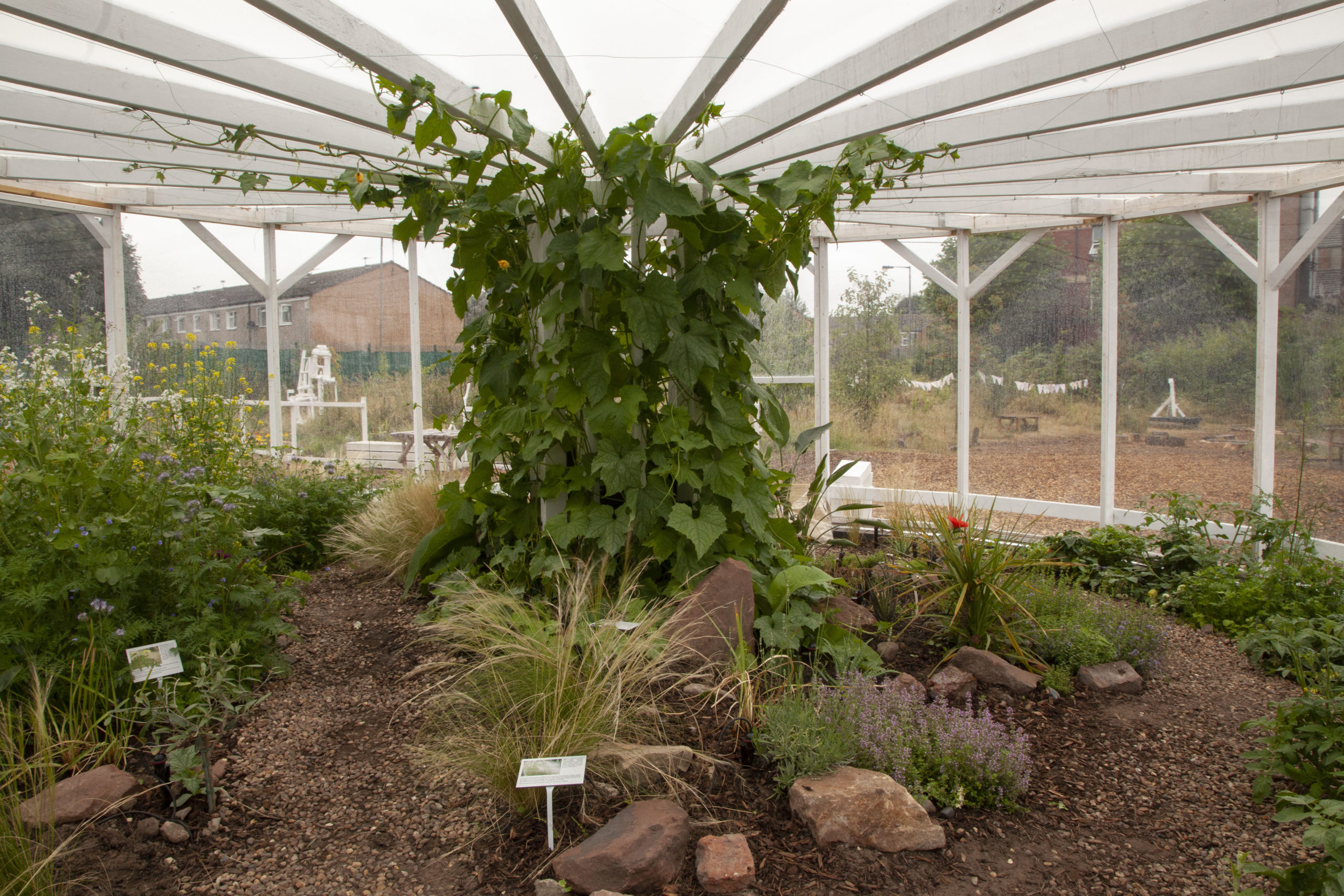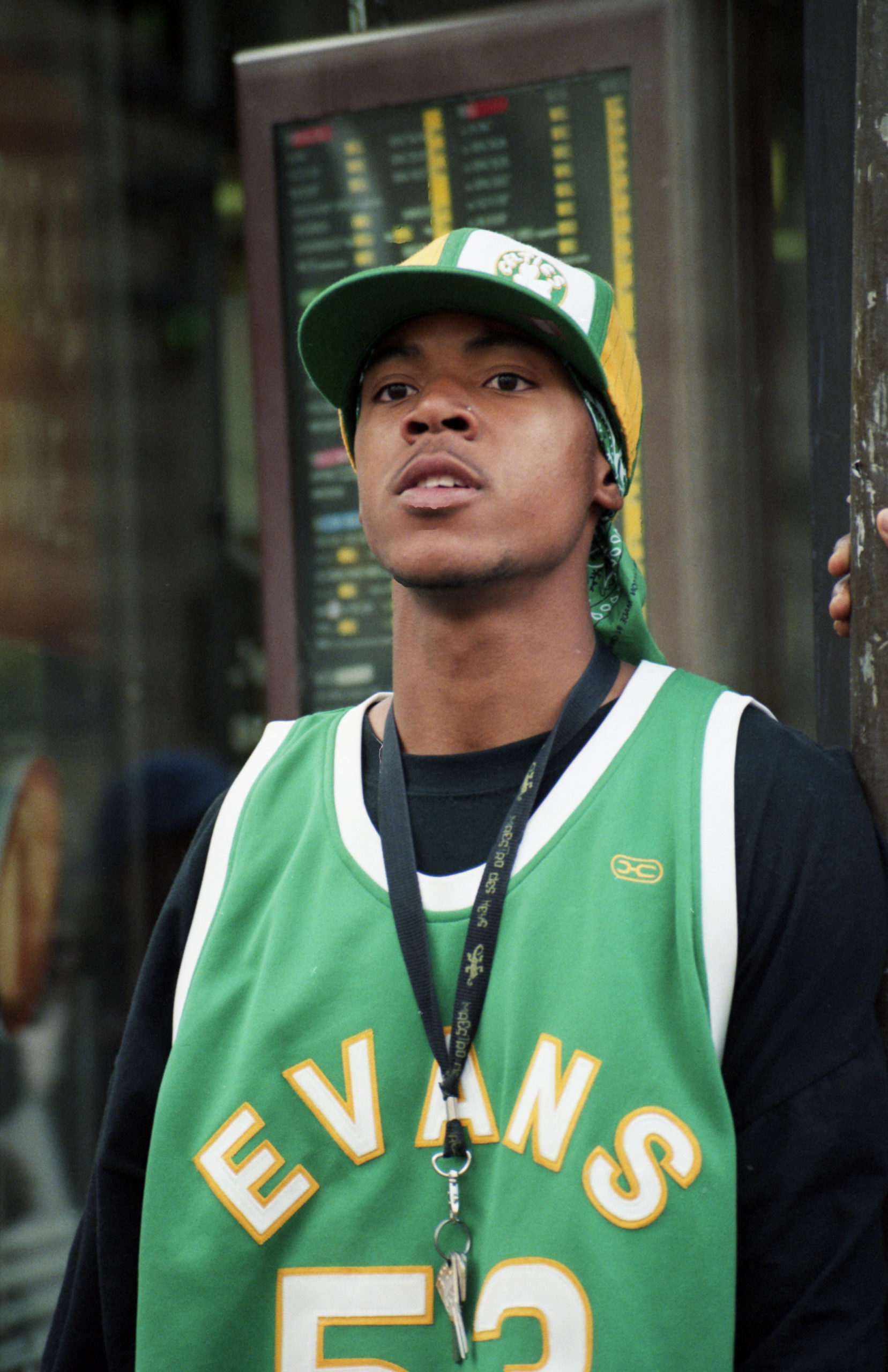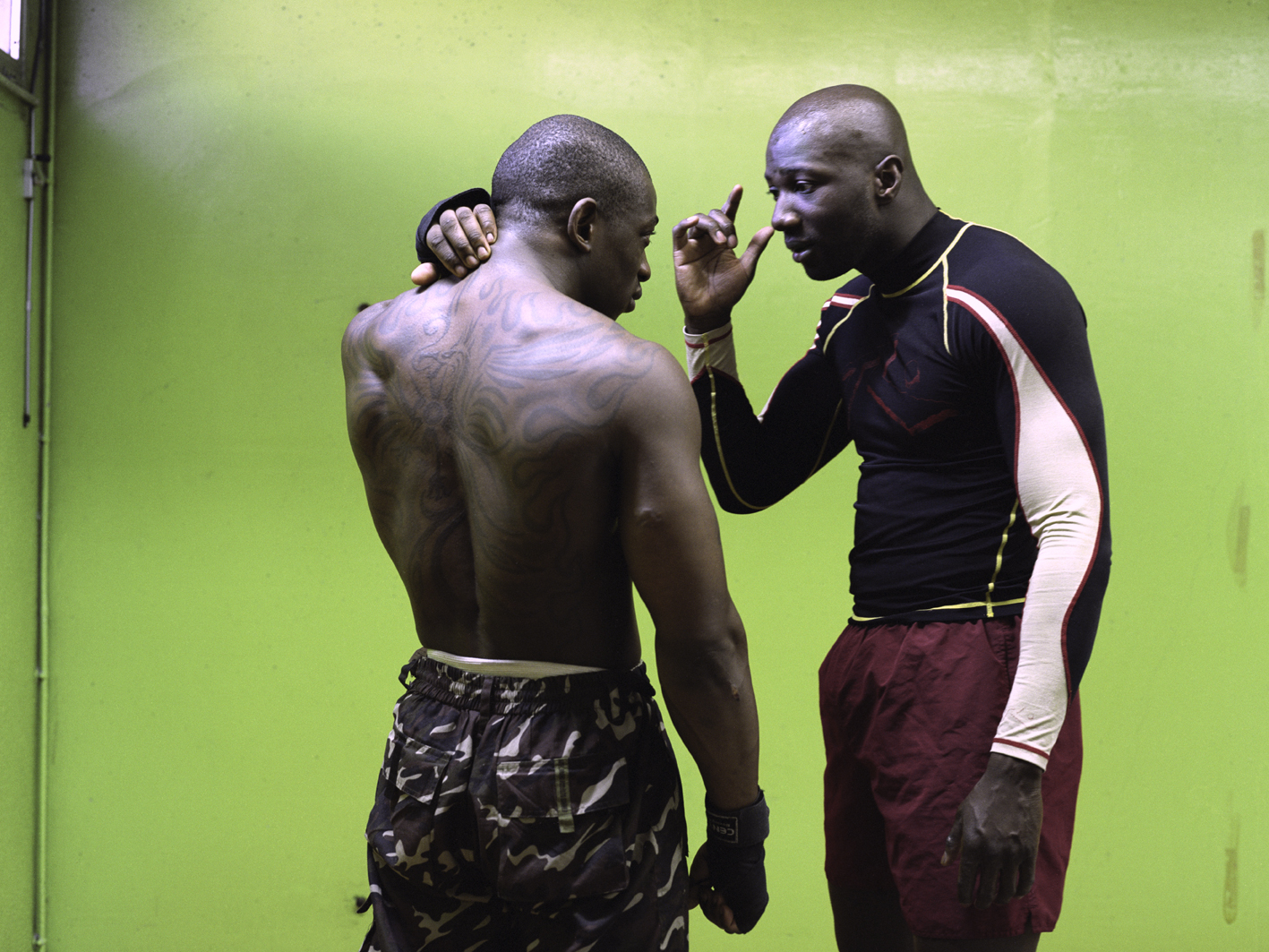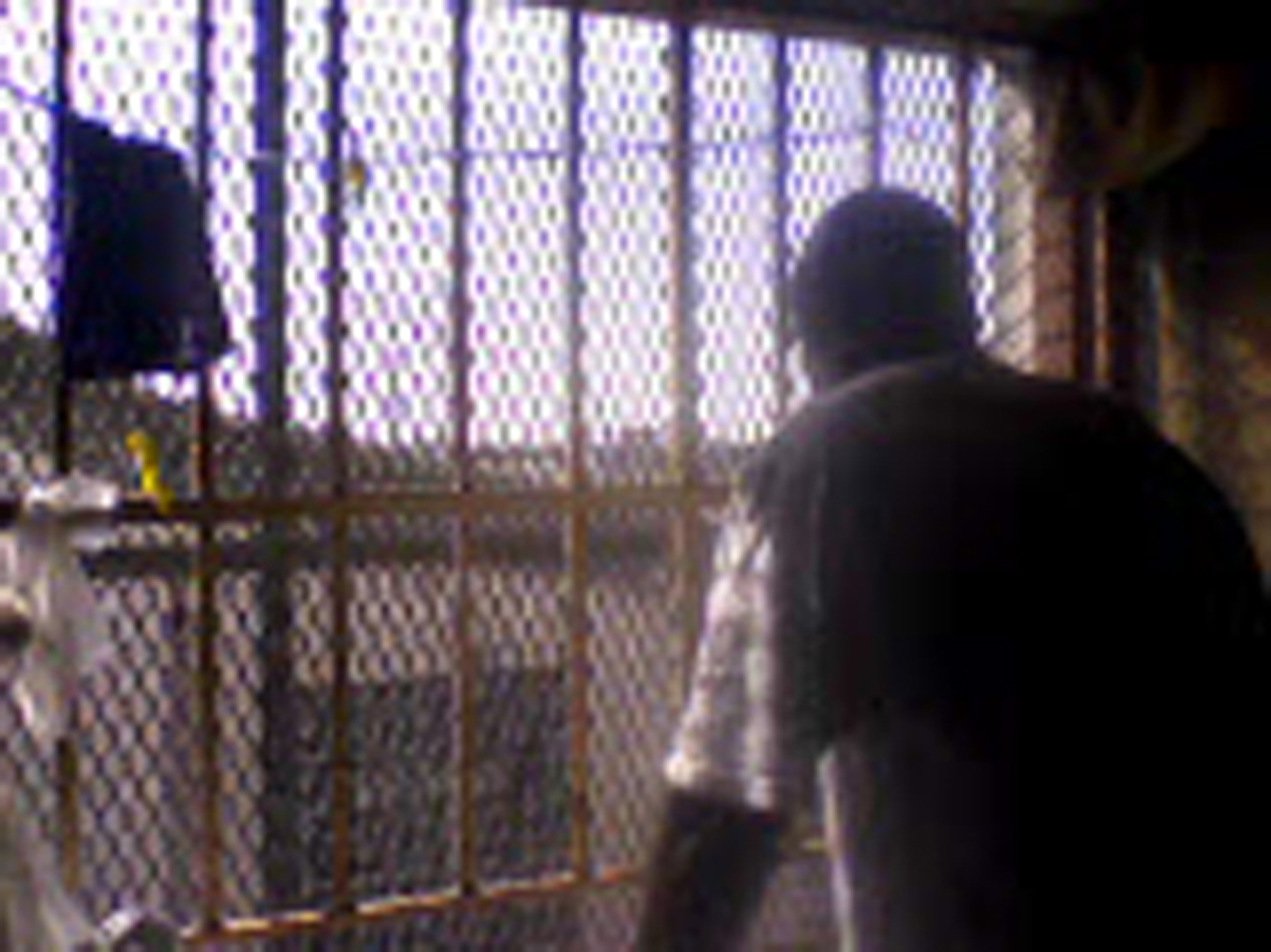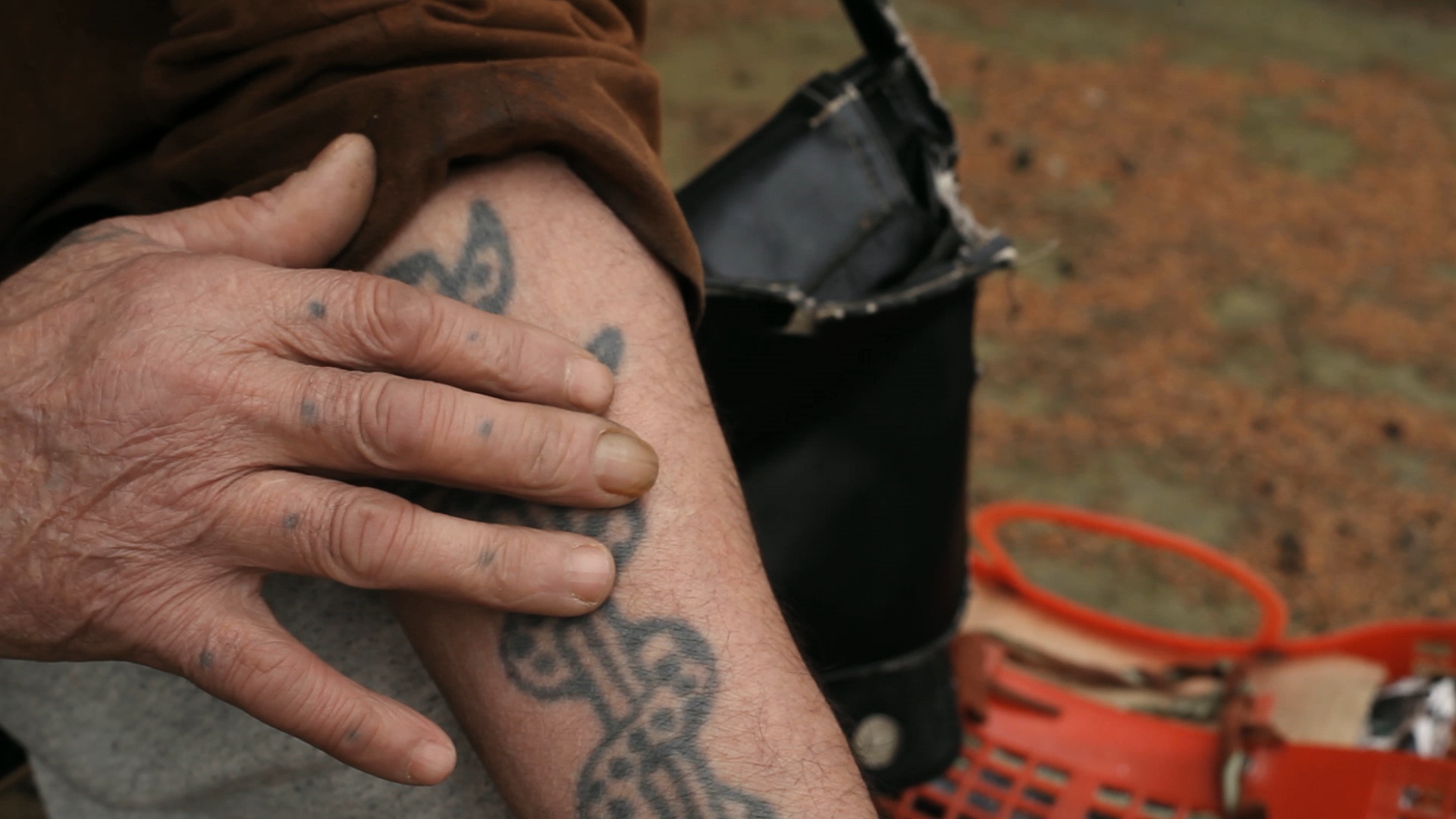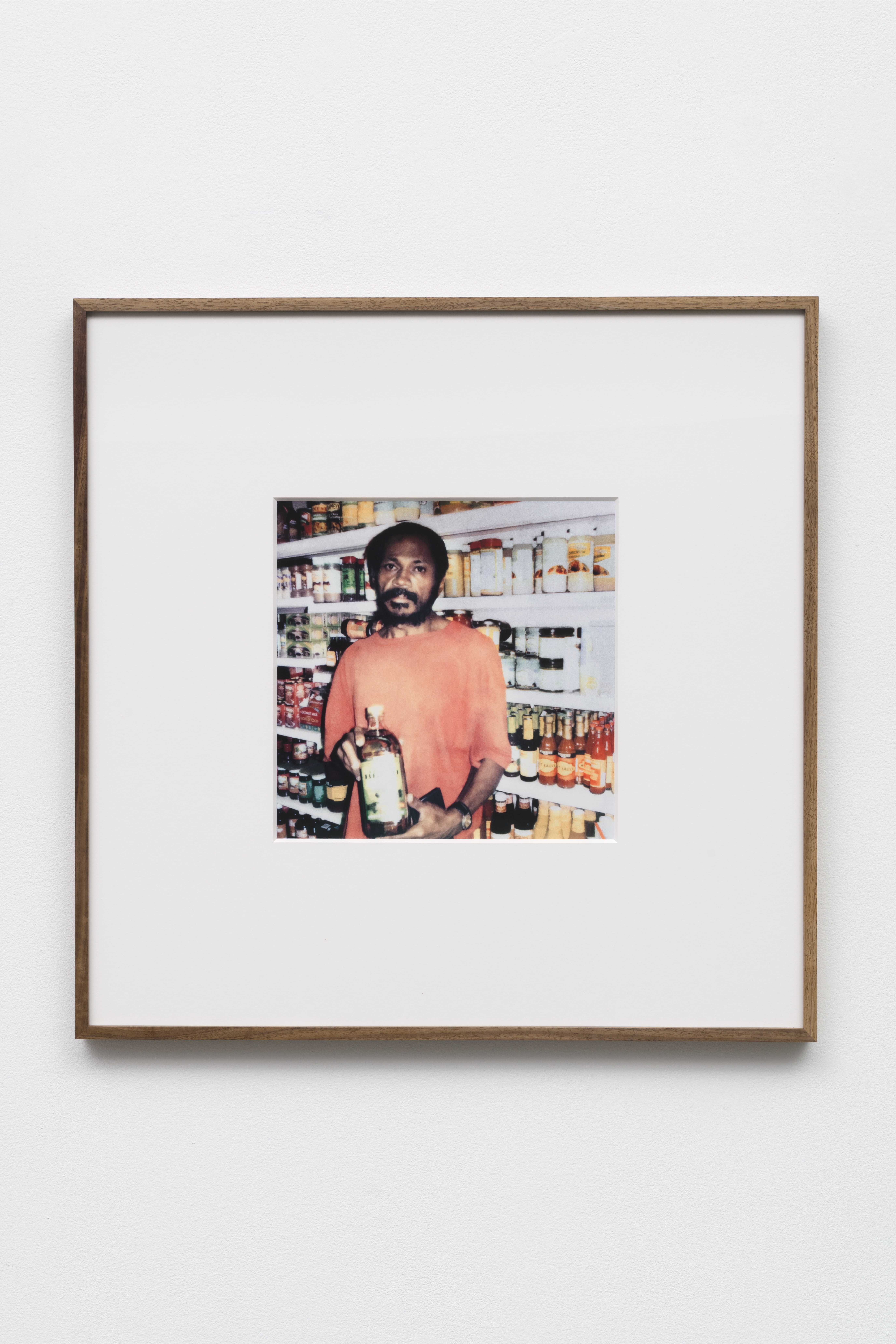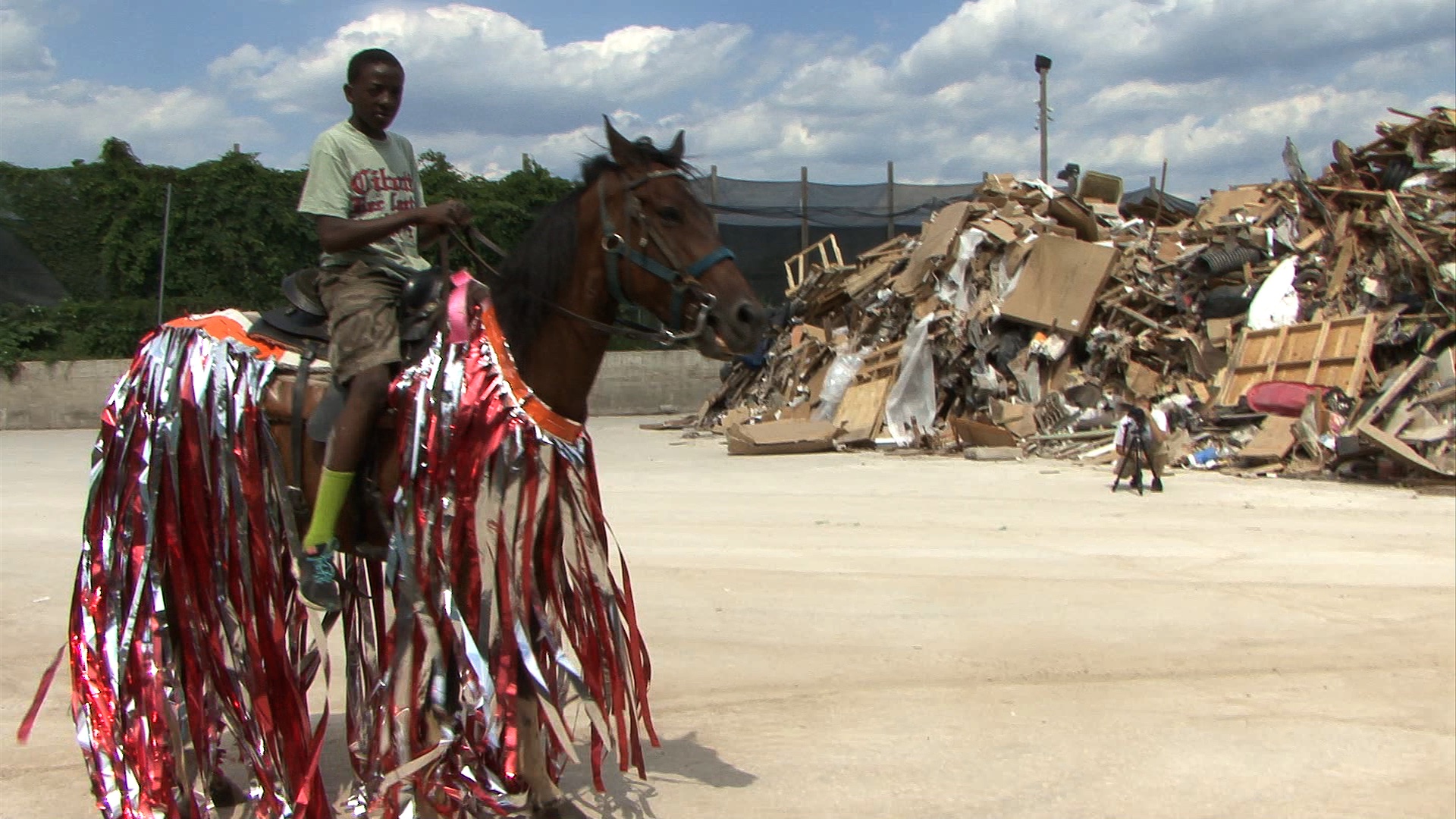Against Confinement—On Mohamed Bourouissa’s Frames of Relation
Mohamed Bourouissa, Brutal Family Roots, installation view, 2020 [photo: Jessica Maurer; courtesy the artist, and Blum & Poe, Los Angeles/New York/Tokyo, and kamel mennour, Paris/London]
Share:
When Mohamed Bourouissa discovered that the yellow flowering tree he remembered from his youth in Algeria was not native to his home country, he was shocked. It was 2018, and he was working on Resilience Garden, a community garden in Toxteth, Liverpool, as part of the Liverpool Biennale, which he intended to populate with plants native to the origin countries of the people from the surrounding neighborhood, where several migrant communities overlapped.
Bourouissa learned that the type of tree he recalled actually came from Australia, where nearly 1,000 species of acacia exist under the umbrella name wattle, or garal in Wiradjuri. He realized that the trees were brought to Europe by the British, sometime in the late 18th century, and spread throughout the continent and to other European colonies thereafter. As art historian and curator Guillaume Lasserre writes, Bourouissa’s discovery plunged his personal history into the history of globalization. That enmeshment found form in Brutal Family Roots (2020), which opened the artist’s latest exhibition, in 2021, at the Goldsmiths Centre for Contemporary Art in London.
Mohamed Bourouissa, Resilience Garden, installation view, 2018, mixed media [courtesy of the artist and Blum & Poe, Los Angeles/New York/Tokyo]
Brutal Family Roots was created for the 2020 Biennale of Sydney, for which Bourouissa undertook an artist residency with Bundanon Trust, located on 1,100 hectares of bushland in New South Wales, Australia. The installation translates the electrical activity of acacia shrubs—planted in large metal vessels positioned on a yellow carpet—into sounds that play through overhead speakers, stemming from a collaboration with French sound designer and programmer Jordan Quinqueret. Words by hip-hop artist, activist, and poet MC Kronic, who is a Waddi Waddi man of the Yuin nation, and Nardean, an Egyptian-Australian MC, poet, and singer-songwriter, overlay the plant transmissions. “My name is lost to the past, but I still have my roots,” goes one MC Kronic line. While that statement elucidates the impact of colonial displacement, exploitation, expropriation, and extraction visited upon the Indigenous peoples of Australia and others around the world, it also recalls the parallel history of how the acacia tree was transported along colonialist routes to create roots elsewhere.
Through this process, histories and points of origin have become eroded or erased, and existences have been modified as much as they have expanded and evolved. Take mimosa, the name Bourouissa remembered for the tree he grew up with in Algeria, otherwise known as Acacia dealbata. Although mimosa can be used to refer to acacia plants, the name also applies to a genus apart from acacia under which a whole set of other plants are grouped. It’s a brain twister if you look into it—a tangle that taps into taxonomies worked out by colonial-era European botanists, an imperialist-patriarchal legacy if ever there were one, with the names of some botanists worked into the species type for the genus they collected or “discovered.”
The geopolitical undercurrents of claiming and naming came to light in 2005, when a vote at the 17th International Botanical Congress in Vienna decided that Acacia would henceforth refer only to plants grown in Australia, even though the genus was first used to describe thorny trees in Africa, where some 134 native species exist. Science reporter Belinda Smith explains, “The word ‘acacia’ came from the Greek ‘akis’, meaning a barb or thorn …. Greek philosopher and physician Dioscorides, who lived almost 2,000 years ago, prepared medicine from the leaves and pods of an African plant he called ‘akakia’.” That fact, according to the rule of priority in botany whereby an older name takes precedence in a naming dispute, means that African acacias should have retained their genus name. But because the acacia is so intertwined with Australian national identity—its sports teams don green and yellow in the tree’s honor, the country celebrates a national Wattle Day, and Australia is home to the majority of the world’s acacias—the country successfully argued its case in what was dubbed the Wattle War.
All this fuss about a name that has nothing to do with the Aboriginal people, the custodians of Country, and their names for plants that have sustained them for generations—long before White settlers arrived and started to name everything, and to erase existing names. Such erasure extends to the tree that Bourouissa knew as his homeland’s, unaware of the networked history and associated violence to which a simple childhood pleasure—it was the tree’s fragrance that he recalled most—was connected. As the curator Lasserre states, “The mimosa, inscribed in the diasporic history of living things, echoes the historical violence of colonization. It undoes the very idea of identity by revealing its fictional character.” That fictional character is the stuff of which nation-states are made: binding foundational myths laid down as reductive fact to obscure the complex networks that problematize any conception of a singular history.
All of which brings us back to Brutal Family Roots. As Bourouissa explained to me, the work questions the concept of identity itself—its fragility and fluidity—as mirrored in the organic complexity mapped by the rhizomatic story of a single plant. In conversation with artist Alvaro Barrington, he describes realizing that he “appropriated a story, thinking very naively that it was [his] own.”1 As such, Lasserre points out, whereas the color yellow in classical European iconography often signifies treachery, in Brutal Family Roots the work’s yellow carpet “stands for misrecognition.” There is a sense that the word misrecognition was chosen carefully, because it speaks to the core of Bourouissa’s inquisitive exploration of embodied conditions of displacement, encounter, relation, and appropriation rooted in the conflicted and contradictory legacies of colonialism, as experienced by those who have inherited their histories and have been shaped by the processes of globalization that extend from that past.
But Bourouissa’s work does not dwell on these histories. Rather, he locates them in the present so as to complicate the narrative and extend their lived implications. The artist is interested in how people from one place grow in another, and how space informs that growth. If you come from somewhere, you not only adapt to another culture, but you also develop new forms of that culture in the process. That remix—a rerouting of roots—comes through in one line from Nardean’s lyrics for Brutal Family Roots, which charts the movement of language: “It starts off as a jacket in England, Add a teh marboota”—the third letter in the Arabic alphabet—“it becomes jacketa, and suddenly we’re in the Middle East.” This process of circulation and adaptation is mirrored, too, in the genre that MC Kronic and Nardean perform; hip-hop has traveled the world and adapted to cultures that have, in turn, adopted and absorbed its style—a genus, if you will, under which distinct offshoots share a common stem.
Mohamed Bourouisssa, We Are Halles, 2002-2003, color photography [courtesy of the artist and Blum & Poe, Los Angeles/New York/Tokyo, and kamel mennour, Paris/London]
American hip hop was influential in the Parisian banlieues where Bourouissa came of age—suburbs that circle Paris and are characterized by large immigrant populations, low-cost rents, and socialized housing, whose utilitarian tower-block architectures mirror the urban housing projects of the US and the UK. These spaces, Bourouissa explains, are infused with French, African, Arab, and American influences—places where, he told Barrington, “we create our culture.” This dynamic of self-realization led to Nous sommes Halles (2002–2003), Bourouissa’s first series of photographs, which captures the creolized street styles of youth in Les Halles, a popular shopping and entertainment district in central Paris. The series was inspired by the photography book Back in the Days by Jamel Shabazz, which depicts hip-hop culture of the late 1980s in New York, prompting Bourouissa to document the people he knew in the same way.
The photographs include a closed-composition portrait of a Black kid with a bright-red Black Power pick in his hair, and a group shot of a crew outside T Maxx Records on Rue St. Denis. Some photos focus on young men wearing Lacoste tracksuits, whose images contrast with another of a subway advertisement for the brand featuring two young, affluent White blondes: a reflection of how, as Bourouissa remembers of that time, he rarely saw representations of himself or his peers. “The idea was to represent people I like, people around me, and to offer a different image of them, from the inside,” Bourouissa told Okwui Enwezor in 2017, “to make people think differently about the suburbs.”2
The banlieues have long been the sites of civil unrest among their disenfranchised communities, who are policed by law enforcement re-enacting the rule of a former colonial state. Most notably, in 2005, a three-week uprising was ignited after two teenagers were electrocuted in Clichy-sous-Bois while hiding in a power substation to avoid a police search. Amid the protests, Bourouissa embarked upon Périphérique (2005–2008), a series of photographs on which he worked with friends and acquaintances to create scenes in the banlieue setting, as if they were historical paintings. La république (2006) makes the clearest allusion. Eugène Delacroix’s 1830 painting Liberty Leading the People, in which Lady Liberty holds up the tricolor to lead fighters of the July Revolution, is translated into a staging of young men framed by tower blocks encircling a small building, atop which two youths hoist a French flag.
Referencing such a strong symbol of French nationalism amid the 2005 uprising was a loaded and insistent gesture made in the face of systemic prejudice. It was a bold displacement of the monolithic nationalist gaze to reframe the social dissent expressed by those rendered Other by the state. The French government and media’s dismissal of urgent political expression as “riots” evaded, if not outright invalidated, the political nature of grassroots action. With that in mind, each image in Périphérique is as much about the viewer as it is about the subject. As Bourouissa told Enwezor: “I wanted to portray my friends the way I saw them and not the way the world saw us.”
Mohamed Bourouissa, La fenêtre, 2005, C-print, 35.43 x 47.24 inches [courtesy of the artist and Blum & Poe, Los Angeles/New York/Tokyo]
Beauty, as expressed in canonical Renaissance painting, was an important tool for Bourouissa’s engagement with the politics of looking in Périphérique, to draw in and level the othering gaze before rerouting—or perhaps correcting—it. The first image made for the series, La fenêtre (The Window) (2005), encapsulates this maneuver. Against a wall painted green-screen green, two Black men are in deep conversation. One stands with his tattooed back to the viewer, his hands wrapped in inner boxing gloves. The other man holds up a hand as if he is offering direction or advice. This intimate focus heightens the image’s drama—an elegant intensification of a private discussion that recalls the intimate encounter imagined by 16th-century Florentine mannerist Pontormo in the Carmignano Visitation.
Bourouissa has said La fenêtre was the first photo he made with the intention of capturing the tension between context, reality, and an artistic point of view. Although he had photographed the men boxing, he told Barrington that he felt this private moment was what needed to be seen—a disruption of the stereotype that Black men are thugs. Hence the title, The Window, which frames the photograph—the representation—as a threshold rather than a closed surface; as an opening to see into, or through; a divide.
As a whole, Périphérique is about overcoming the frame as an oppressive structure, from the housing estates that exclude entire communities through their enclosure, to the stereotypes that box them in. Bourouissa describes the project as a study of the relationship between body and space, and in particular the overbearing spaces of public housing estates, which he relates to the context of prisons. “I have so many friends in prison,” he told Barrington, “and the first thing they try to do is … work out. They start because the structure or the architecture can be very oppressive, so the first thing they do is try to create their own armour to protect themselves.” Returning to La fenêtre with that in mind, what is expressed amid the relation between subject, space, and artist is care—for the self, and for another—as a form of relational transcendence.
Mohamed Bourouissa, Temps mort, 2009, stills, video projection [Courtesy of the artist, and Blum & Poe, Los Angeles/New York/Tokyo, and kamel mennour, Paris/London]
The importance of relationality in Bourouissa’s work stems from the artist’s personal involvement with his subjects; an impetus to confront the oppressive conditions of racial and class inequality drives his pursuit of humanizing—or rather, rehumanizing—representations of those who are often framed as less than. Take Temps mort (2008–2009) a video documenting grainy, low-res exchanges of text, photographs, and moving images between the artist and one his best friends, Al, who was imprisoned at the time. The seeds for the project were sown when Bourouissa was in Brazil at the behest of a former gallerist, who tasked him with restaging Périphérique in the context of the favela, a suggestion that the artist soon realized felt off—another example of a reductive gaze. While there, Al texted him about needing phone credits, and a conversation soon evolved across two spaces—inside and out—with the screen becoming the line, or window, between the two.
Mohamed Bourouissa, The whispering of ghosts, 2018, video color and sound [courtesy of the artist and Blum & Poe, Los Angeles/New York/Tokyo]
The tension of that heightened representational line—the relational window—is distilled into an edited version of two exchanges in the short film The Whispering of Ghosts (2018–2020), which tracks the making of Resilience Garden in Liverpool, from which Brutal Family Roots stems. Footage shows Bourouissa in his Algerian hometown Blida, speaking with Bourlem Mohamed, a patient at the Blida-Joinville Psychiatric Hospital, where revolutionary psychoanalyst Frantz Fanon, known for his engagement with the struggle for Algerian independence, once practiced.
Bourouissa talks with Mohamed about gardening as a form of occupational therapy, and requests guidance for designing the one that he would create in Liverpool. In turn, Mohamed asks the artist why he is leaving his homeland. The scene then cuts to Liverpool, where local men ask the artist why he is not helping the people of Algeria instead, because the Muslims in Toxteth were doing well, as was he. In this exchange, Bourouissa’s gaze—indeed, his position—is complicated by the gaze of men who see themselves as less privileged than an artist making work for a state-funded institution, demonstrating how Bourouissa’s role is evolving as he engages with communities beyond his own.
Speaking with me, Bourouissa recalls that encounter: “It was a really clear and important moment, because it revealed the complexities behind the conditions of globalization that are not always black and white.” So often, the artist notes, he is working himself out of boxes that obfuscate the fluidity of lived experience, a process that feeds into issues of recognition in the representations he creates. In this frame, viewers become active witnesses to the artist’s mediations, as he not only positions himself on a line connecting subject, representation, and audience, but stages himself as the line itself: the kind that renders the act of looking—in other words, of relating—into the central point and question of his work.
Nothing is straightforward in this set up. Take the series Shoplifters (2014): photos of photos that the artist found lining the entrance wall of a grocery store in Brooklyn. Shot by the store manager, the original images show people who were caught stealing, posed with the items in question held up for view—such everyday essentials as laundry detergent and bread. Bourouissa says that this work is the most difficult he has made, and it shows. A majority of the people captured are Black, many of them elderly, all of whom struck a deal with the manager to have their picture made and displayed in the store rather than be turned over to the police—a violence historically and systemically enacted in perpetuation of racial and class inequities, and one that each image candidly reflects.
By reproducing these photos, Bourouissa implicates himself in an extension of the original photographer’s violence so as to hold to account the internalized system of crime and punishment that is stacked against those who are marginalized by it—including the store manager, who, perhaps inadvertently, reproduces a power that has more than likely marginalized them, too. Beyond the focus on the systemic violence that led to each shot, however, is the staging of a more insidious aggression: of reproducing these images, ultimately without consent, for a white cube setting, where they will be consumed by an audience who may or may not grasp the humanity captured in the eyes of individuals trying to survive.
Mohamed Bourouissa, Unknown #18 (Shoplifters Series), 2014-2015, Inkjet print, 12.63 x 12.63 inches [courtesy of the artist and Blum & Poe, Los Angeles/New York/Tokyo]
As Bourouissa points out, Shoplifters is tough because art cannot always be nice—especially when the invisibility of inequity is precisely what reproduces hierarchies of exclusion. But that does not mean Bourouissa is excusing himself from the ethical problems surrounding consent and complicity raised by the work. This culpability was made personal in London, where Shoplifters was presented alongside Nasser (2015), a video showing Bourouissa’s uncle reading his court judgment for the crime of violent robbery—getting into a fight for food—couched in inaccessible legalese; he speaks slowly, and in broken French, often looking up at his nephew during brief pauses.
For the artist, who only recently chose to show the video in public, Nasser is about what it means to be from somewhere else and be excluded because of it. Bourouissa’s uncle came to France at the age of 45. With kids and no access to support, including mental health resources, he turned to drinking. In the video, Nasser’s exclusion is rendered at once literal—his crime and punishment under the letter of the law—and abstract: the document itself and the struggle to read it demonstrate a margin at which so many become stuck. At is core, though, what Nasser shows is a human story, the kind systematically reduced by statistics, legal articles, and headlines that demonize not only incidents fueled by societal disconnect, but also the people—someone’s son, mother, or brother, for instance—who have been driven to partake in them.
At the same time, Nasser and Shoplifters record the artist’s decision to turn these intimate moments of violent vulnerability into works for public display, and his implication in that choice. For Bourouissa, Nasser is also a critique of his position as an artist and auteur; in representing someone’s story, he becomes the author of it by proxy. It is difficult ground to stand on, but it infuses his compositions with palpable pressure. On this ground, conscious engagement with ideas of authorship, staging, representation, and relationality become entangled with questions around power, systemic violence, and histories that continue to adapt in an always-evolving present.
There is a reason for all of this; a reach to make the image a productive site of engagement. As much as Bourouissa’s work confronts the oppressive violence of the frame and the complicity of the artist in the act of framing, he is also exploring how people—artists included—can navigate, confront, and potentially find ways out of, or through, forms of social and political confinement. This came together in Liverpool, where Bourouissa’s goal was to create a community garden whose “context … tells a story at the same time as it creates a common world, which affirms knowledge by transferring and implanting knowledge in new spaces.”3
For Bourouissa, relations happen everywhere, all the time, and his work is not only open to all their facets, but it absorbs them across all levels, from maker to subject, context to audience. “All my projects are about sharing a human experience and trying to make it visible,” Bourouissa tells me. The idea is to create a state of tension that opens up a space where many worlds co-exist—an attempt at creating space to redefine, in his words, the rules. “It is a question of rethinking things, rather than having a certain form of identity,” he told Enwezor. “What really matters to me is that you can create your own territory.”
Mohamed Bourouissa, Still from Horse Day, 2015, video diptych (color and sound) [courtesy of the artist and Blum & Poe, Los Angeles/New York/Tokyo]
That reach for emancipatory horizons—territories beyond those already mapped—is palpable in Horse Day (2014–2015), which marked a turn for Bourouissa after his work about the Parisian banlieues. The two-channel video installation revolves around the Fletcher Street Urban Riding Club in North Philadelphia: community stables that Bourouissa learned about through American photographer Martha Camarillo’s 2006 publication, Fletcher Street. While making the work, Bourouissa for the first time embedded himself in a community other than his own. In doing so, he confronted—as he would later do with the acacia tree—his own preconceptions of identity.
Bourouissa says he was stunned when he learned about the existence of Black cowboys. Having grown up with American westerns—what he describes as “Hollywood Propaganda”—he digested the idea that cowboys were White, even though historians estimate one in every four cowboys was Black.4 In fact, the 1956 western The Searchers, starring John Wayne, was based upon the life of Black cowboy Britt Johnson—a detail echoed in the opening scenes of Horse Day, as one Black rider asks if John Wayne was White or Black. “That tells you something about power and representation,” Bourouissa says, a power that not only feeds into debates surrounding colonialist monuments today—so many of them depict a white man on a horse—but speaks to his personal realizations upon arriving in Philadelphia to work on the project.
Initially, Bourouissa wanted to make a Black western, but he soon realized the idea was naïve, as was his understanding of Black American culture, which was based on his exposure to popular culture in France. “I discovered all these complexities,” he told Barrington, talking about the individuality of the people who make up the urban rider community, each there for reasons of their own, “and I discovered one thing: this was not an exception. It was a tradition … something that has its own history.” Black urban riders have been in Philadelphia for more than a century, starting with Black Southerners who arrived with their livestock.5 Later, Black-owned riding clubs were established throughout Philadelphia, including a number on Fletcher Street. Ellis Ferrell, who founded Fletcher Street Urban Riding Club in 1980, was riding horses on the streets of Philadelphia as early as the late 1940s.6
Bourouissa spent about eight months living among members of the Fletcher Street community and developing relationships that led to the artist’s proposal to organize a celebratory pageant, a Horse Day, that invited the whole community to participate. The preparations for the event constitute much of Horse Day, as does the celebration itself, which is marked by costumes made for horses and their riders in collaboration with local artists, including epic chainmail armor made from CDs. On the work, curator Murtaza Vali wrote, “Much of this has a documentary feel, but Bourouissa mixes up registers by including staged sequences such as a fast-paced montage in which a horseman and a green muscle car race through empty city streets.” The result is a sweeping, moving portrait of a community—a history painting for the 21st century.
At its heart, Bourouissa says, Horse Day is about community, and what it means to create one, something he connects to artist communities and their practice of creating possibilities “to just be.”7 Beyond a portrait of a community—that is, beyond the frame of artistic representation, and the confinements both depicted and challenged therein—is a celebration of people who have created, and continue to create, worlds of their own.
Stephanie Bailey is editor in chief of Ocula, a contributing editor at ART PAPERS and LEAP, and a regular contributor to Artforum International, Yishu: Journal of Contemporary Chinese Art, and dɪ’van: A Journal of Accounts. Formerly the senior editor of Ibraaz, where she worked from 2012 to 2017, Bailey is also a member of the Naked Punch editorial committee; a managing editor of Podium, the online journal for M+ in Hong Kong; and the current curator of Art Basel Conversations in Hong Kong.
References
| ↑1 | “Mohamed Bourouissa & Alvaro Barrington in Conversation,” June 10, 2021, published on Goldsmiths CCA Channel website. |
|---|---|
| ↑2 | “Mohamed Bourouissa & Okwui Enwezor, Conversation,” in Mohamed Bourouissa, exhibition catalogue (Philadelphia: Barnes Foundation, 2017) (Paris: Kamel Mennour, 2017), excerpted and published online by Blum & Poe. |
| ↑3 | Pauline Delfino, “Conversation: Mohamed Bourouissa,” Soleil Rouge Magazine, March 8, 2021, online. |
| ↑4 | Katie Nodjimbadem, “The Lesser-Known History of African-American Cowboys,” Smithsonian Magazine, February 13, 2017, online. |
| ↑5 | Paulina Cachero, “The True Story of the Black Cowboys of Philadelphia Depicted in Concrete Cowboy,” Time, April 2, 2021, online. |
| ↑6 | Fletcher Street Urban Riding Club, “About Us,” online. |
| ↑7 | “Verso: A Conversation with ‘Urban Riders’ Artist Mohamed Bourouissa,” audio published on Barnes Foundation website upon the occasion of Mohamed Bourouissa: Urban Riders (June 30–October 2, 2017), online. |
